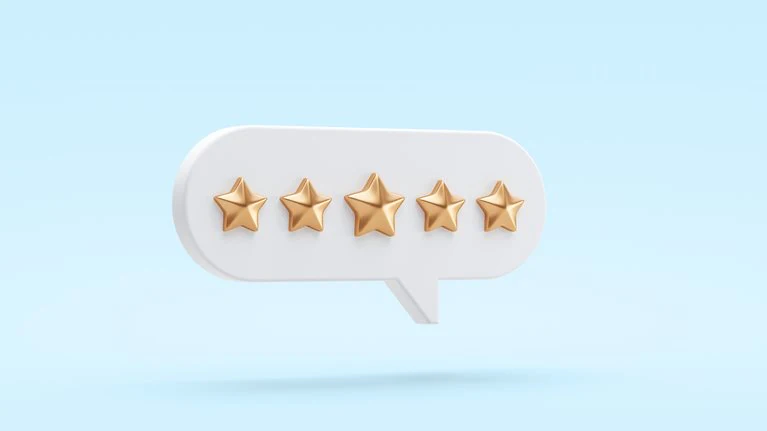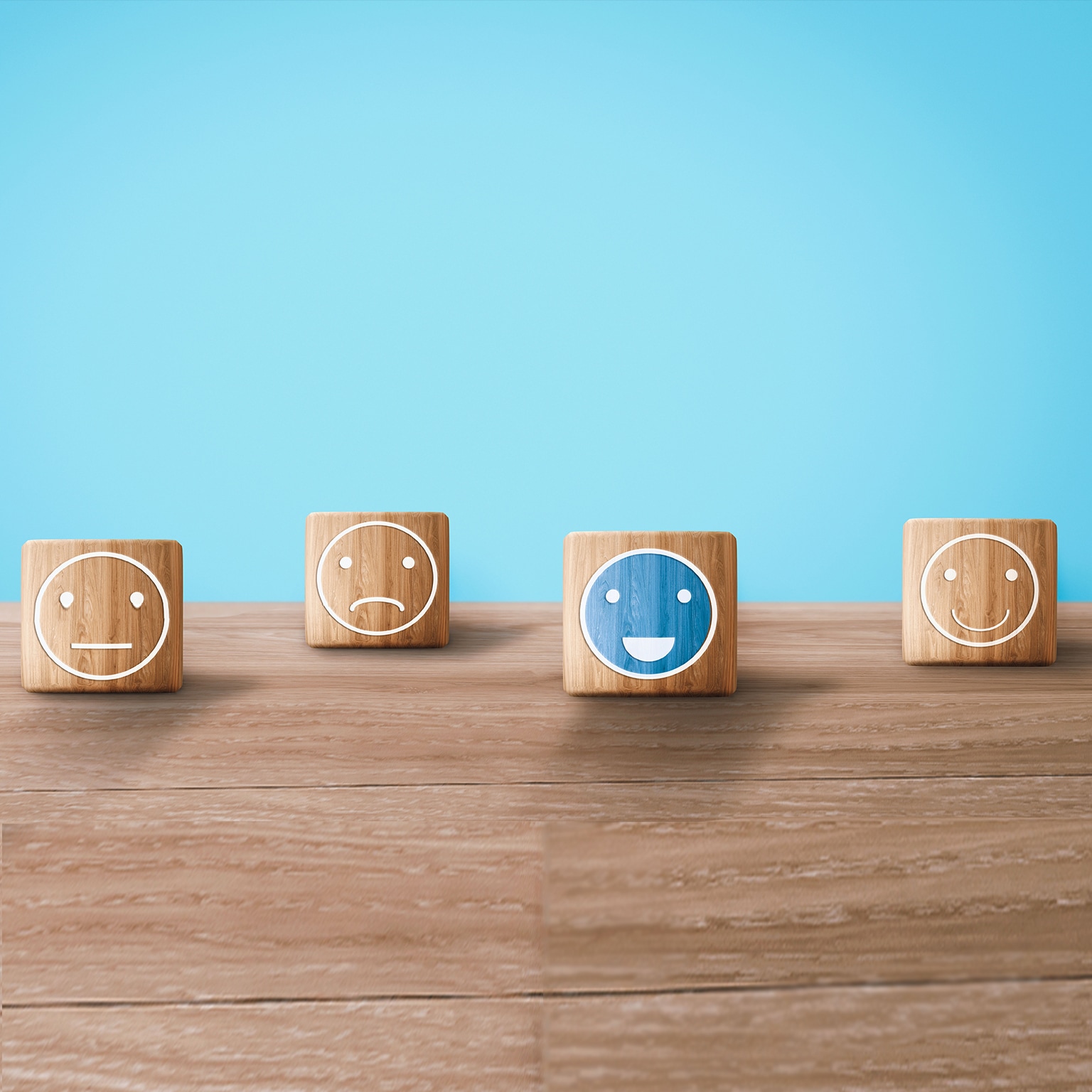
You might have an intuitive sense of what separates good CX, or customer experience, from bad. Imagine, say, you want a latte. When you visit the coffee shop, are staff members attentive? If you are a regular, do they greet you by your name? Was the store designed intuitively? Do they take your order promptly and hand you your cup with a smile? If you have a problem, is it promptly resolved, or is someone sent to help you? Do they proactively reach out to understand your overall experience?
All of those questions touch on elements of customer experience. The four components of CX are brand, product, price, and service.
Basically, CX refers to everything an organization does to deliver superior experiences, value, and growth for customers. And it’s crucial in an age when how a business delivers for its customers is just as important as—if not more important than—the products and services it provides. In a digital world, where customers review and share their experiences with a company in public forums, it has become vital for companies to connect with customers across their journeys at an emotional level. Not only is customer experience the right thing to do for customers but it also results in 3x returns to shareholders.
The COVID-19 pandemic was a test of how to connect with customers in times of crisis. And many did surprisingly well in providing good CX, for instance, by swiftly reorienting their efforts to meet customers’ primary needs with respect to safety, security, and everyday convenience. Take, for example, e-commerce companies and food delivery services that developed methods of contactless delivery to keep customers and drivers safe as the virus spread.
This article offers a brief overview of customer experience-related topics and answers questions such as:
- What are customer journeys?
- How to measure customer experience?
- What is the consumer decision journey?
- What is customer care?
- How to improve customer experience?
What are customer journeys?
A customer journey describes the customer’s end-to-end experience, as opposed to their satisfaction at various individual transactions or touchpoints. These can include many things that occur before, during, or after the customer experiences a given product or service. Examples of customer journeys include bringing a new customer on board, resolving a technical issue, or upgrading a product.
Consider onboarding a new customer. At one company, this process took about three months and on average entailed nine phone calls, a technician visit, and interactions via both the web and mail. While there was a 90 percent chance, at any given touchpoint, of the interaction going well, average customer satisfaction fell nearly 40 percent over the course of the journey. More important than solving issues at the level of individual touchpoints was to reimagine the approach to service operations around the most crucial CX journeys.
Attending to full customer journeys instead of touchpoints can drive stronger business outcomes. For instance, a McKinsey survey found that customer satisfaction with health insurance is 73 percent more likely when the entire journey works well than when only touchpoints do. Looking to the hospitality industry, customers of hotels that get the entire customer journey right may be 61 percent more willing to recommend those hotels than customers of hotels that just focus on touchpoints.
If your company is looking to reinvigorate its customer experience, three efforts can help you move from touchpoints to journeys:
- Observe. Put yourself in your customers’ shoes: What do they see? This can help organize and mobilize employees around customer needs. In addition to identifying and understanding the customer’s journey, you’ll need to quantify what matters to customers and define a clear aspiration and common purpose.
- Shape. When you design customer experiences, interactions must be reshaped into different sequences. Even if your effort starts small, it can swiftly become much larger and entail the digitization of processes, the reorientation of company culture, and nimble refinements in the field.
- Perform. Making the transition to prioritize journeys can be a journey in itself that takes years and requires deep engagement from everyone in the company, from corporate leaders right down to the front line.
Learn more about our Growth, Marketing & Sales and Operations practices.
How to measure customer experience?
You might have a hard time imagining how you measure something as ephemeral as the magic your company creates for customers. But it can be done. Best practice calls for three guiding principles to help optimize customer-experience measurement:
- Measure the customer experience at the journey level, rather than at the level of touchpoints or overall satisfaction.
- Invest in hardwired technology that captures feedback on a daily basis from multiple channels, integrating survey results and other data into comprehensive dashboards.
- Cultivate a mindset of continuous improvement at all levels.
Depending on the level of CX adoption within an organization, consider the power of predicting CX, which can help you stay ahead of customer churn and dissatisfaction. Why? Survey-based systems alone don’t necessarily meet the needs of today’s companies; they’re limited, reactive, ambiguous, and unfocused. Predictive customer insight may unlock more powerful insights to improve customer experiences.
What is the consumer decision journey?
The consumer decision journey (CDJ) is a reconceptualization of the traditional marketing funnel. In this approach, the way customers make decisions is framed as a circular process involving four phases where customers can be gained or lost:
- initial consideration
- active evaluation, or the process of researching potential purchases
- closure, when consumers buy brands
- postpurchase, when consumers experience those brands
And conceptions of the consumer decision journey continue to evolve, especially in light of the new technologies and capabilities available to consumers. Today, it is important for brands not only to react to customers but also to actively shape their decision journeys. This may mean compressing or even eliminating the consideration and evaluation phases to drive competitive advantage. To foster an accelerated customer loyalty journey, four distinct but interconnected capabilities are crucial:
- Automation can be used to streamline the customer journey (for example, being able to snap a photo of a check and deposit it via your bank’s app rather than physically visiting a bank branch).
- Proactive personalization uses a customer’s information to instantly customize CX.
- Contextual interaction uses knowledge about where a customer is in a journey to deliver them to the next set of interactions.
- Journey innovation finds new sources of value, such as new services, for both the customer and the brand. This involves companies mining their data and insights about customers to figure out what other services they might appreciate. The best companies also design customer decision journeys that allow open-ended testing and frequent prototyping of new services or features.
Learn more about our Growth, Marketing & Sales practice.

Introducing McKinsey Explainers: Direct answers to complex questions
What is customer care?
Customer care generally happens within contact-center operations. These are sometimes referred to as call centers, and people working at these organizations support customers throughout their journeys with a company’s products or services—no matter where customers need help (in-store, online, via mobile apps, etcetera). This is as all part of providing an omnichannel customer experience. Contact centers play an important role in customer care, and a forward-looking vision for these centers could entail hyperpersonalization to meet customers’ expectations in a way that’s both strategic and experience oriented.
How has COVID-19 changed customer experience?
COVID-19 changed customer experience in several ways. Many companies needed to shift the ways they worked with customers, for example, by providing alternative digital experiences when it was not safe for physical stores to be open. More broadly, how your company interacted with customers throughout the pandemic may have triggered an immediate and lingering effect on customers’ sense of trust and loyalty. In times of crisis, meeting customer needs with empathy, care, concern, and connection is important. It can help frame short-term responses, build longer-term resilience, and prepare for success after a crisis passes by keeping a pulse on how preferences are changing in real time. And it’s worth noting that more than three-quarters of consumers changed their buying habits during the pandemic—and in addition to value and convenience, purpose also drives shopping decisions.
What does digital customer experience mean?
Digital customer experience refers to elements of the experience that happen online or with the support of digital and analytics. This can facilitate interactions that are holistic, predictive, prioritized, and focused on value.
Consider the example of a leading airline that built a machine-learning system to track and prioritize customers who might choose a different carrier because they experienced multiple flight delays or other issues. The system, built in three months, drove an 800 percent increase in customer satisfaction and also reduced churn for priority customers by 60 percent.
When it comes to digital customer experience, companies are increasingly aiming to transition to predictive insights that could represent the future of CX. Some CX leaders are pushing on predictive CX platforms, which consist of three key elements:
- a customer-level data lake, with customer, financial, and operational data to develop a rigorous understanding of customer experiences
- predictive customer scores using analytics that track what’s influencing customer satisfaction and business performance
- an action and insight engine that’s shared with a broad set of employees, via tools such as customer-relationship-management platforms, through an API layer
These platforms can play a powerful role in linking CX to value and building clear business cases to improve CX. Of course, companies must stay attuned to customers and the privacy imperative. And it will also be crucial to build security into the digital customer experience.
Learn more about our Growth, Marketing & Sales, Digital McKinsey, and Risk & Resilience practices.
What about customer experience and loyalty?
If you offer a good CX, chances are your customers will be loyal to you or your brand. But that doesn’t happen without real effort. “Consumers are changing, and consumer trends are driving this,” says former McKinsey partner Jess Huang on the new generation of customer loyalty programs. “With the move to digital over the last ten years, consumers are spending more and more time on their phones and various digital channels. This makes it much easier to access the consumer, but there is also a lot more noise. Brands are trying to figure out the right way to break through that noise and develop a relationship with the consumer.”
Loyalty programs are vital to doing so, but two-thirds of them fail to deliver. Focusing on eight elements can help your loyalty programs perform better:
- Don’t be afraid to offer customers incentives to redeem their loyalty points.
- Consider the customer segments where there’s “breakage” (people whose points expire), and think about potential opportunities for improvement.
- Enlist strategic partners to enhance offers and rewards.
- Offer points-plus-cash options.
- Measure success based on engagement, not just accruals.
- Segment customers into groups you can handle.
- Personalize test-and-learn across customer segments.
- Create a standard P&L to accurately measure the incremental impact of loyalty programs.
Is customer experience the same in B2B and B2C contexts?
Much of CX in B2B isn’t the same as in B2C. Here’s why:
- relationships often go deeper in B2B
- longer, more complex B2B journeys involve more individuals
- customization is more widespread in B2B than B2C
- the stakes are usually higher in B2B deals, as individual B2B customer relationships are often worth millions of dollars
Nevertheless, more B2B customers say they would like a better customer experience—one that is more like those of B2C customers. And in complex B2B sectors like industrial services—think aftermarket service contracts for jet engines, industrial robots, or utility-transmission equipment—better customer experience is increasingly critical for growth. In a survey of 1,000 B2B decision makers, lack of speed in interactions with their suppliers emerged as the number-one “pain point” and was mentioned twice as often as price.
Keeping a finger on the B2B pulse can help you understand and respond to emerging B2B customer needs, especially in light of the shift to omnichannel. Adjusting your approach for the mix of traditional, remote, and self-service sales channels is increasingly important—and 94 percent of B2B decision makers say new omnichannel sales model are as effective or more effective than prepandemic sales models. For even more, here’s a case study of how a B2B organization in China became more customer-centric.
Learn more about our Growth, Marketing & Sales and Operations practices.
How do different industries approach customer experience?
Because customer needs and expectations vary by context, different industries may approach CX in different ways. Here are just a few examples of how industries grapple with the issues:
- Automotive. Car companies are putting customer experience in the driver’s seat—whereas manufacturers once competed on their engineering capabilities, CX is now a true differentiator, and customer-centric innovation is crucial.
- Travel. The COVID-19 pandemic turned travel upside down, and travelers’ customer experience is emerging as a challenge during the recovery. Doing better could entail aiming higher on experience, understanding customers more deeply, and moving faster operationally.
- Retail. Retail and consumer CX likely needs to account for a variety of omnichannel operational considerations. Retailers also need to stay attuned to the rise of the inclusive consumer and make adjustments to serve their needs. And preparing for the future of shopping, where technology is everywhere, will also be important.
- Banking. CX transformation in banking can pay off by delighting customers and, in turn, delivering revenue and cost improvements for banks themselves. And in regions like Asia–Pacific, digital innovation in banking offers some insight on whether or how banks should rethink customer engagement. Keeping up with customer trends can also unearth new opportunities, for instance, as we’ve seen with buy now, pay later financing models. Fintech players may be on the vanguard when it comes to taking the friction out of financial services for customers.
- Insurance. Many insurers have invested heavily in digitizing customer journeys and processes to improve the experience. A user-first, omnichannel approach could rely on the availability of online purchasing capabilities, the ease of navigating online journeys, and seamless integration of sales support and advice. The rise of insurtechs has also helped the industry address some customer pain points.
- Healthcare. In coming months and years, “Care at Home” could reshape the way health systems deliver patient-centered care. The rise of telehealth could also affect CX in healthcare. Focusing on whole-person care could improve outcomes for patients with behavioral-health conditions. Monitoring healthcare consumer insights will remain important, and providing compassionate, personalized care can benefit both patients and healthcare organizations.
- Utilities. Transforming CX in utilities helps customers and can allow utilities themselves to drive out costs. Self-service and digital channels are crucial in this context.
- Government. Prioritizing and improving customer experience in government can offer big benefits for customers. It can also give employees greater purpose—and improve agencies’ reputations.
- Service businesses. Are customers of industrial-services businesses happy? The bar is rising, but for industrial OEM customer experience, organizations will need to better understand what customers want and need.
What are the differences between customer experience and employee experience?
While the design thinking that transformed customer experience is now also transforming employee experience (EX), there are some differences between the two:
- A customer journey is often a lot quicker than an employee journey. It might take months or even up to a year for employers to hire a new employee. That’s a lot longer than most customer journeys.
- Many employers’ interactions with their employees continue to be top-down instead of being a constant, two-way iterative process—as successful customer journeys have become. For instance, while many companies are exploring hybrid work options, others are considering a full return to the office, even though many of their employees would prefer to continue working from home.
But happy employees are crucial to providing good CX—meaning that CX and EX are related. In that regard, improving employee experience in service of building a customer-centric culture can have a powerful effect. Just consider how much mindsets matter here: some employees, for instance, might think, “I’m not involved in asking for customer feedback.” But in a customer-centric culture, reframing that so employees feel empowered to create opportunities to ask for customer feedback can pay dividends.
Learn more about our Growth, Marketing & Sales, People & Organizational Performance, and Operations practices.
How to improve customer experience?
Three building blocks are essential in transforming or improving customer experience throughout your organization:
- Build aspiration and purpose. A clearly defined CX aspiration should deliver on your company’s purpose and brand promise. Have you developed a customer-centric vision and aspiration, linked it to value, and translated it into a concrete road map?
- Transform the business. Here’s where you discover customer needs, design solutions, and deliver impact, whether that’s via customer journeys, products, services, or business models.
- Enable the transformation. After introducing a new experience for customers, your company needs to consider how to sustain its efforts. This involves transforming employee mindsets; building capabilities; stepping up on technology, data, and analytics; establishing cross-functional governance and an agile operating model; and deploying systems to measure and manage performance.
Improving customer experience can make a big difference. In over a decade of helping more than 900 companies design and implement enterprise-wide CX programs, approaches that rest on these building blocks have delivered 15 to 20 percent boosts in sales conversion rates, 20 to 50 percent reductions in service costs, and 10 to 20 percent improvement in customer satisfaction.
It’s also important to stay attuned to customer experience pitfalls so your organization can avoid them. These include failing to link CX to value, taking a narrow view of CX, and applying limited creativity; don’t miss the examples of how other organizations have sidestepped these issues in transforming CX.
For more in-depth exploration of these topics, see McKinsey’s Customer Experience collection. Learn more about the Marketing & Sales, Operations, and McKinsey Digital Practices, and check out customer experience–related job opportunities if you’re interested in working at McKinsey.
Pop quiz
Articles referenced include:
- “Six customer experience pitfalls to avoid,” March 17, 2022, Itai Miller, Kevin Neher, Rens van den Broek, and Tom Wintering
- “Next in loyalty: Eight levers to turn customers into fans,” October 12, 2021, José Carluccio, Oren Eizenman, and Phyllis Rothschild
- “This time it’s personal: Shaping the ‘new possible’ through employee experience,” September 30, 2021, Jonathan Emmett, Asmus Komm, Stefan Moritz, and Friederike Schultz
- “How to boost growth in industrial services: Better customer experience,” July 28, 2021, Hugues Lavandier, Senthil Muthiah, Kevin Neher, Stephanie Trottier, and Hyo Yeon
- “Prediction: The future of CX,” February 24, 2021, Rachel Diebner, David Malfara, Kevin Neher, Mike Thompson, and Maxence Vancauwenberghe
- “The three building blocks of successful customer-experience transformations,” October 27, 2020, Victoria Bough, Ralph Breuer, Nicolas Maechler, and Kelly Ungerman
- “The human touch at the center of customer-experience excellence,” October 8, 2020, Alex Camp, Harald Fanderl, Nimish Jain, Bob Sternfels, and Ryter von Difloe
- “The CEO guide to customer experience,” McKinsey Quarterly, August 17, 2016, includes interviews with Alfonso Pulido, Ron Ritter, and Ewan Duncan
- “The consumer decision journey,” McKinsey Quarterly, June 1, 2009, David Court, Dave Elzinga, Susan Mulder, and Ole Jørgen Vetvik



